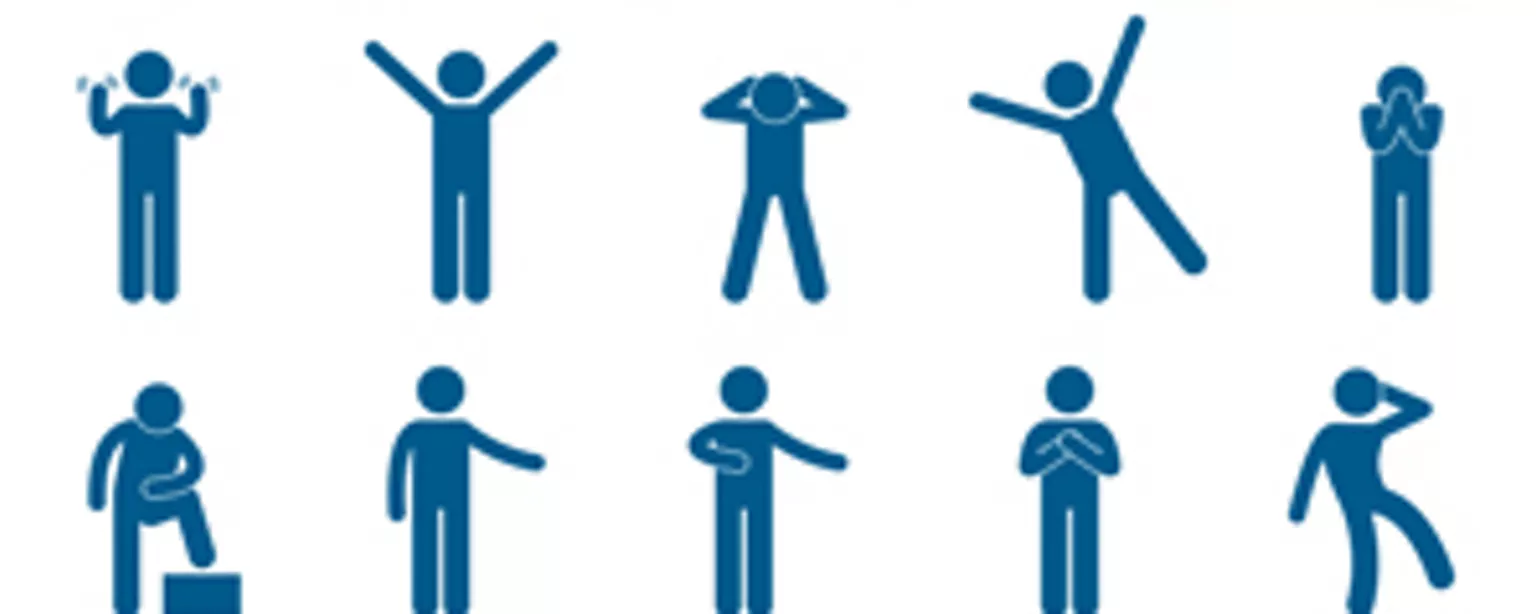Ever wonder why it’s often better to talk to someone in person versus over the phone? There are a number of reasons, but being able to interpret their body language is a key one.
Here’s a head-to-toe approach to learning the basics of how to read body language:
1. Head, eyes and face
This is generally the easiest area to look for meaningful body language signals.
- A slightly tilted head shows interest and sympathy.
- Direct eye contact usually means confidence and trust.
- Looking away and back repeatedly shows disinterest, preoccupation or impatience.
- A smile that only includes moving the corners of the mouth is usually a “just to be polite” smile and may be false or forced.
- A good way to tell a genuine smile from a fake one is to look at the person’s eyes. If the corners of their eyes crinkle, the smile is typically genuine.
2. Arms and hands
Many people "talk with their hands." Here's what they're likely saying:
- Extended or open arms usually mean openness to ideas, relaxation and/or excitement.
- Conversely, crossed arms often mean discomfort, unease and/or defensiveness.
- Expansive hand gestures indicate passion, either positive or negative.
- Constantly touching one’s face or clothes with one’s hands, or fidgeting with small objects, shows discomfort.
3. Torso and posture
Understanding posture is a big part of knowing how to read body language. Cues may be subtle but telling.
- A tall, straight and open torso shows confidence and ease.
- A hunched torso can mean tiredness, timidity or defensiveness.
- Mirroring, in which a person consciously or unconsciously mimics the actions of their conversation partner, indicates comfort, support and agreement — and it usually starts with posture.
4. Legs and feet
Surprisingly, people’s leg movements can tell you a lot about how they’re really feeling.
- Standing or sitting with both feet pointed toward you means interest and connection.
- Pointing one foot out or away telegraphs disinterest and a desire to leave.
- Crossed legs when sitting usually means the person is closed off and unreceptive.
- Shifting weight or shaking one leg shows discomfort, anxiety or stress.
5. Context and individuality
Paying to attention to body language can help you better understand and interact with colleagues and clients. But there are some caveats to consider. Crossed arms can mean defensiveness or unease, but it could also mean the heat hasn’t come on yet and your coworker is cold. Fidgeting and shifting weight can show discomfort, but if you know your boss likes to think on his feet, it could mean a desire to fuel the conversation with movement. Knowing how to read body language also includes judging each sign you see by the context of the situation and that person’s individual quirks.








